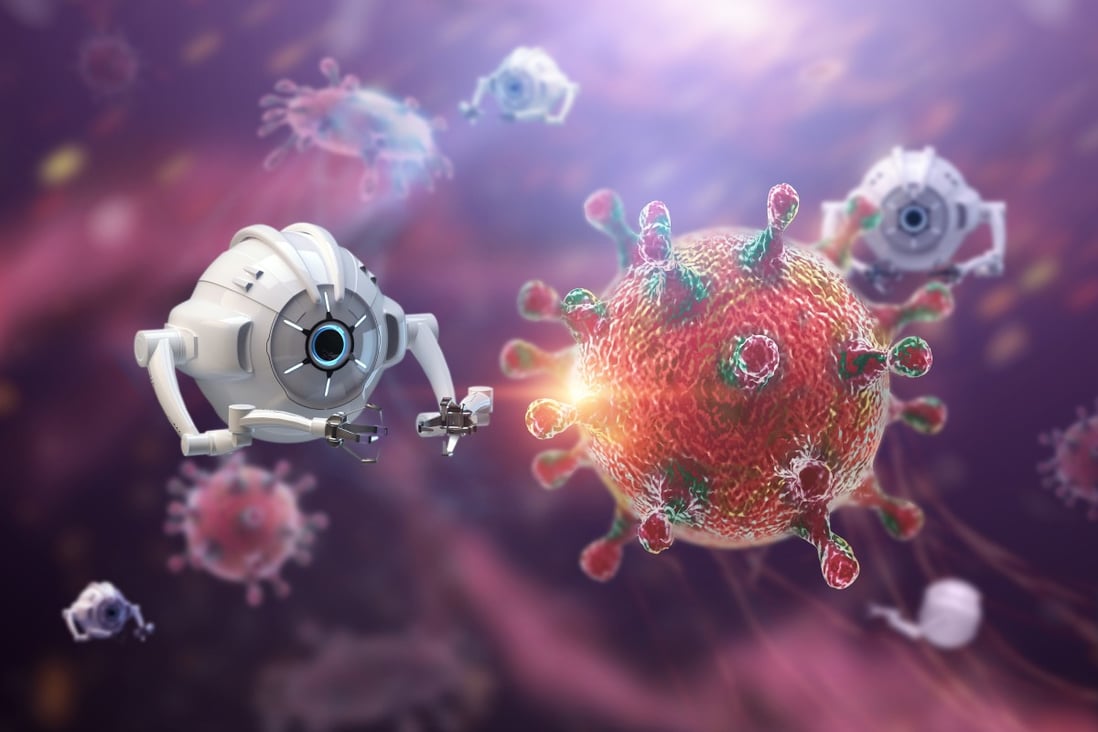Chinese scientists build atom-sized ‘4-stroke’ quantum engine
- Researchers use lasers to increase or suppress an ion’s quantum characteristics and generate power at microscopic level
- The novel approach is outside mainstream quantum theory and divided scientific opinion during the peer-review submission process
Chinese scientists say they have developed a
engine that uses a single atom as a motor and will one day be capable of driving nanorobots inside a human body.
By using a laser to precisely manipulate the state of a quantum ion, Professor Feng Mang from the Chinese Academy of Sciences’ Institute of Physics and Mathematics in Wuhan has overcome a barrier to running a power system at the microscopic scale.
The research was published in October in the peer-reviewed journal Nature Communications, in cooperation with scientists from the Guangzhou Institute of Industry Technology, Zhengzhou University and the University of Michigan.
Quantum systems are especially sensitive to outside interference but an energy exchange with the outside world is inevitable. A breakthrough in laser technique led to a quantum engine that could resist external disturbances, the paper said.
A steam engine goes through four thermodynamic modes in a complete operating cycle known as four-stroke – adiabatic compression, isovolumic heating, adiabatic expansion and isovolumic cooling.
In Feng’s quantum engine, a single calcium ion acts as a steam-like working medium and the compression or heating processes of the cycle are pushed by laser beams of different frequencies and intensities.
The engine generates power in the form of light, which varies in intensity, making the mode changes of the ion observable.
It was previously generally believed that the stronger the quantum feature of the ion, the higher the efficiency of the heat engine, with the working efficiency of a quantum engine only relevant to the motor’s starting power.
However, using a controllable laser, Feng found that elaborately increasing and suppressing, rather than always increasing, the ion’s quantum feature during the different engine modes achieved the greatest efficiency.
Feng’s theory is not only an exploration of cutting-edge science, it also challenges mainstream ideas and has divided opinion among some scientists. The submission process for the paper took more than a year, with many questions from peer experts.
“But truth speaks for itself. We finally proposed and published this work. The work is controversial,” Feng said on Tuesday.
“We are cautious about that. We have been working in this area for more than 10 years, and we have been focusing on the energy and information conversion of quantum systems. We submitted the papers after repeated verification of theory and experiments.”
Feng said there was more work to do before the technology could be used.
“Our research is mainly to provide a demonstration. In order to actually manufacture usable molecular motors or to supply power to nanorobots, we need to find a suitable working medium, just like the water vapour in the steam engine.”
The team has two follow-up research directions – to find the exact point where the laser helps the engine produce the highest output power, and to create a cold machine by changing the direction of the engine cycle, using the same principle as a refrigerator’s compressor.


